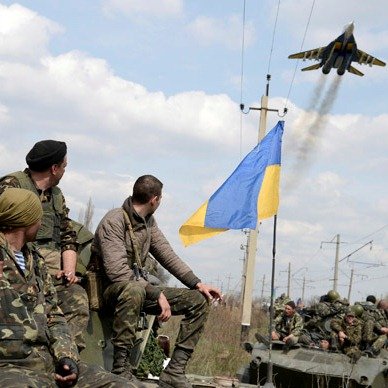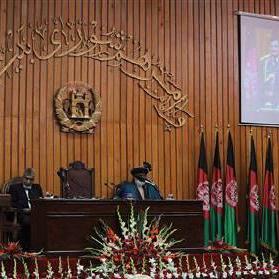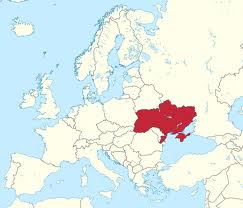Since the downing of MH-17 the Ukrainian government has intensified its military campaign against the separatists in Ukraine’s east. In short order, the military was able to recapture a dozen towns and villages on the outskirts of the two largest rebel-held cities – Donetsk and Luhansk. This came at a cost of at least 100 civilians and Ukrainian soldiers killed over the last week. Given the complexity of urban warfare and Ukraine’s reliance on Grad rockets, taking these densely populated insurgent strongholds without collateral damage is next to impossible. This, in turn, could produce an upsurge of new revenge-seeking rebel recruits. However, even if the Ukrainian government succeeds in establishing control over the rest of the country militarily, the insurgency is likely to persist. There are at least five reasons why reliance on military force may not necessarily lead to a quick settlement of the conflict. [See the original post at The Monkey Cage blog.]
1) Local Support. The insurgency in Donbas started as a movement demanding broader political autonomy, but quickly transformed into an armed secessionist insurrection capturing at least a third of the region’s territory. Local public support for full separation of Donbas from Ukraine has hovered around 30% since the start of the conflict in April. The latest polling from the region indicates that in early July 37% of respondents in Donbas endorsed secession. As one study shows, it is quite difficult to turn the population against rebels; neither coercion nor the provision of benefits are typically successful. Reestablishing military control may lead to passive collaboration with separatist sympathizers. Locals could still provide support to the insurgency in numerous smaller towns and villages beyond the reach of an overstretched Ukrainian military. This will allow the insurgents to adopt a more flexible hit-and-run guerilla tactics using small groups capable of blending in with civilian population.
2) External Sanctuaries. Decentralized guerilla campaign in Donbas will rely not only on domestic areas of support, but also on external military and political support from across the Russian-Ukrainian border. Recent evidence indicates that Russia has offered its border territories to store military equipment for the insurgents and provide training to new recruits. If the Ukrainian government pursues the strategy of attrition in dealing with the insurgency, the Russian authorities will most likely maintain its sanctuaries for the rebel fighters. As Idean Salehyan shows, the availability of extraterritorial bases for the rebel groups substantially prolongs the duration of conflicts.
3) Weak State Capacity. In order to gain the support of the wavering local majority, Ukrainian authorities will need to provide security and public goods to the residents of government-controlled areas. However, there are both financial and political constraints that will weaken the government’s capacity to deliver. The IMF forecasts that Ukraine’s annual GDP will drop by 6.5% this year, while the government deficit is projected at 10.1% of GDP. This week the government announced that it would need at least 800 million dollars to continue its counterinsurgency operation and asked the parliament to further increase taxes and cut public spending. The deputies’ refusal to appropriate needed funds yesterday triggered Prime Minister Arseniy Yatsenyuk’s resignation as he recognized that soldiers would receive no pay next month. The reconstruction of Donbas is even more uncertain as the government promised to turn to foreign donors for funds in the coming fall.
In addition, the provision of basic security on the ground may also prove challenging. The official reports from the incumbent controlled areas of Donbas mention continued looting and robberies by the groups in camouflage uniforms. On July 21, for example, one group of paramilitaries took possession of a KAMAZ truck in Mariupol, while another group in the Volnovakha area stole a family’s car, electronics, savings and coercively recruited their young son. Both incidents occurred deep in government-controlled areas and, hence, are likely the work of pro-government paramilitary battalions. They rely on private funds, operate outside of direct government control and often include far-right activists. One report documented how a former presidential candidate Oleh Liashko roamed through one Eastern Ukrainian town with his armed private security force hunting for someone he considered a separatist sympathizer. Restraining these private militias, however, will prove difficult for the government since they form a backbone of the counterinsurgent forces. If the roving pro-government militias keep harassing and plundering, local guerrilla groups will step in to offer protection.
See the original post at The Monkey Cage.











